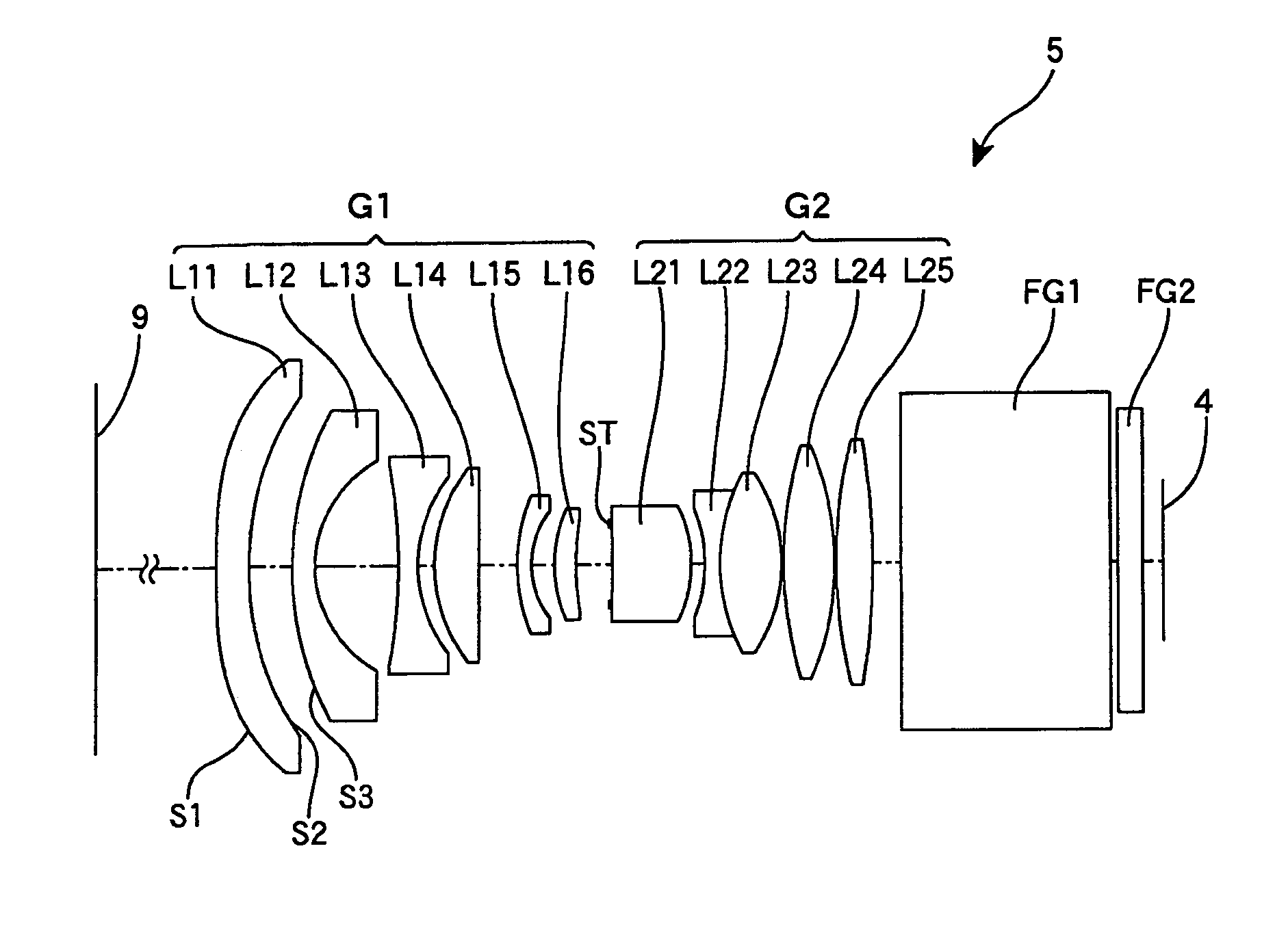Projection lens system and projector
a projection lens and projector technology, applied in the field of projection lens system of projectors, can solve the problems of drop in aberration performance, increase in cost of glass lens, and increase in effect, so as to suppress the effect of thermal deformation of aspherical lens on overall aberration-correcting performance, increase the cost incurred, and reduce the effect of thermal deformation
- Summary
- Abstract
- Description
- Claims
- Application Information
AI Technical Summary
Benefits of technology
Problems solved by technology
Method used
Image
Examples
first embodiment
[0027]FIG. 2 shows the lens arrangement of a projection lens system 5 according to the present invention. The projection lens system 5 of the present embodiment is composed of eleven lenses L11 to L16 and L21 to L25 arranged in order from a screen 9 side (output side) toward a light valve 4 side (input side or incident side). These lenses L11 to L16 and L21 to L25 can be divided at a “stop” (aperture) ST into a former group G1 that has a negative overall refractive power and a latter group G2 that has a positive overall refractive power. Parallel glasses FG1 and FG2 disposed between the projection lens system 5 and the light valve 4 are optical low-pass filters.
[0028]The former group G1 is composed of six lenses that in order from the side of the screen 9 are negative meniscus lenses L11 and L12 that are convex on the screen side, a bi-concave negative lens L13, a convex lens L14 that is almost flat on the light valve side, a negative meniscus lens L15 that is convex on the screen s...
second embodiment
[0046]FIG. 4 shows the lens arrangement of a different projection lens system 5 according to the present invention. The projection lens system 5 according to the present embodiment is also composed of eleven lenses that are divided into two groups at the stop ST. From the screen 9 side, the former group G1 is composed of six lenses L11 to L16 and the latter group G2 is composed of five lenses L21 to L25. The fundamental shapes of these lenses L11 to L16 and L21 to L25 are the same as in the first embodiment, and therefore the projection lens system 5 of the present embodiment is also a lens system with an overall construction of eleven lenses that are negative, negative, negative, positive, negative, positive, positive, negative, positive, positive, and positive in order from the screen side. Detailed data on these lenses is given below.
Lens Data (No. 2)
[0047]
NoRDndνd181.4664.001.4918057.2lens L11237.0086.82335.5602.801.5891361.3lens L12416.2359.535456.8232.401.5891361.3lens L13620....
PUM
 Login to View More
Login to View More Abstract
Description
Claims
Application Information
 Login to View More
Login to View More - R&D
- Intellectual Property
- Life Sciences
- Materials
- Tech Scout
- Unparalleled Data Quality
- Higher Quality Content
- 60% Fewer Hallucinations
Browse by: Latest US Patents, China's latest patents, Technical Efficacy Thesaurus, Application Domain, Technology Topic, Popular Technical Reports.
© 2025 PatSnap. All rights reserved.Legal|Privacy policy|Modern Slavery Act Transparency Statement|Sitemap|About US| Contact US: help@patsnap.com



